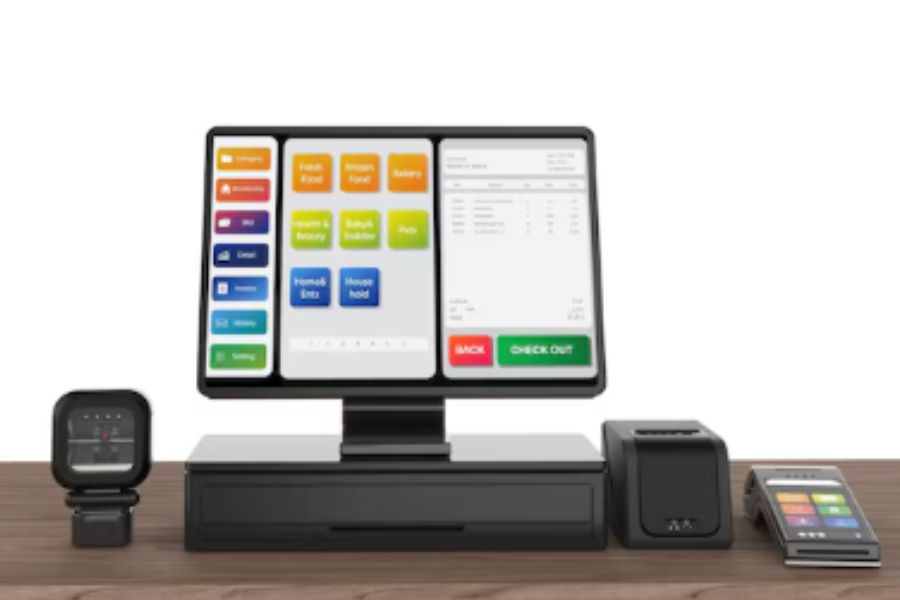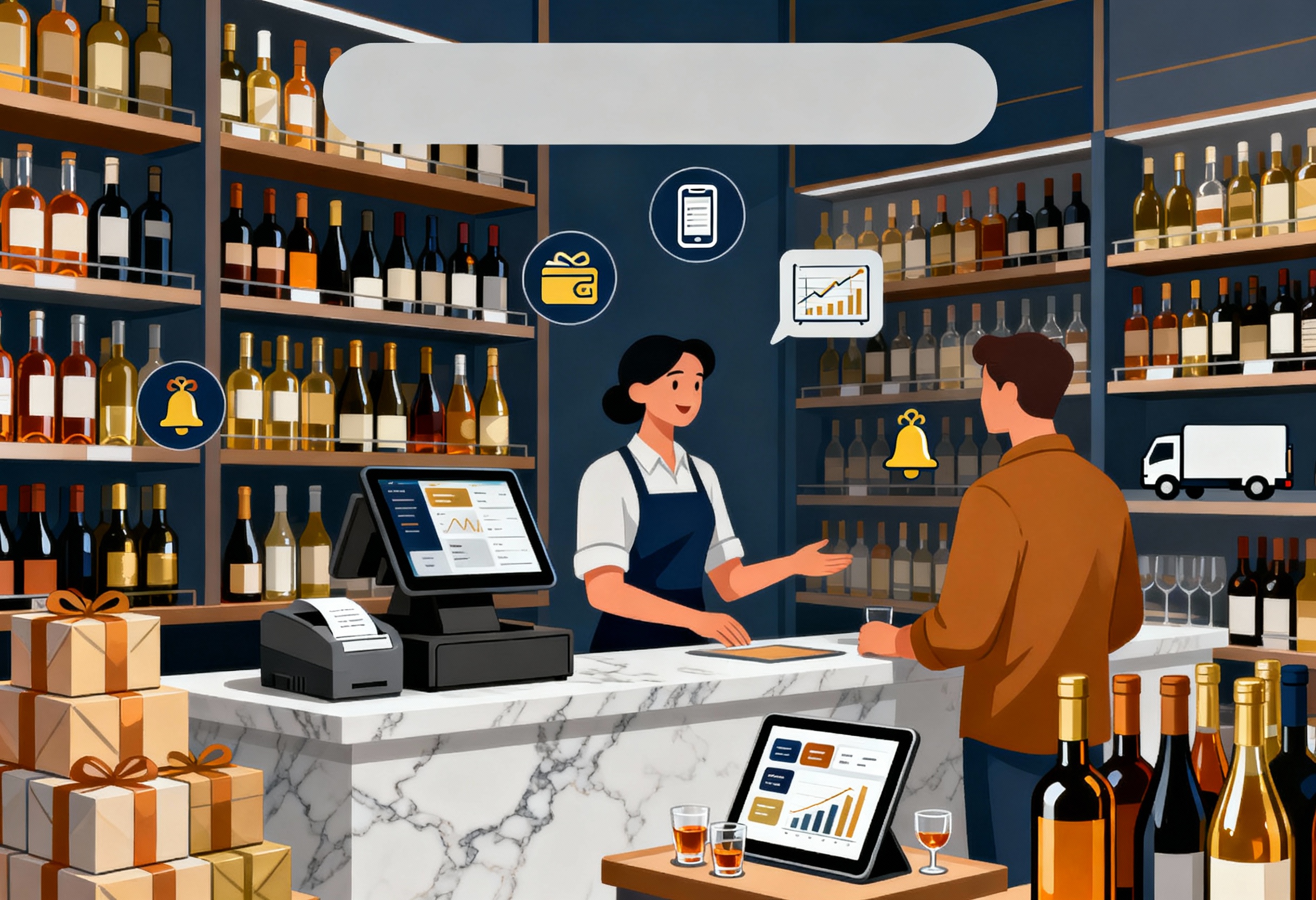Selecting the right POS software for your wholesale business impacts your operations, customer relationships, and bottom line. Many wholesalers struggle to understand the pricing structures and determine fair costs for their wholesale POS software. This guide breaks down the key factors that shape POS software pricing in the wholesale sector and provides practical strategies to maximize your technology investment. Armed with this knowledge, you’ll be better equipped to negotiate contracts and choose a solution that aligns with your budget and operational needs.
Highlights:
- The total cost of wholesale POS software is shaped by several factors, including hardware needs, feature set, deployment type, support plans, and the number of users, terminals, or locations involved.
- To cut down on POS expenses, look at areas like contract length, system scalability, ease of use, centralizing sales channels, and the quality of vendor support.
What is Wholesale POS Software?
Wholesale POS software is a specialized business management system designed for companies that sell products in bulk to retailers, distributors, or other businesses. It combines standard point-of-sale functions with features specific to wholesale operations, such as bulk order processing, multi-level pricing, inventory tracking across warehouses, and B2B customer relationship management.
This software streamlines complex wholesale transactions through advanced features like purchase order automation, multi-currency support, and detailed sales analytics.
Most wholesale POS systems include integrated modules for inventory management, customer accounts, supplier relationships, and financial reporting. They often support various payment terms and methods common in wholesale trade, including credit lines, partial payments, and scheduled installments.
Key Cost Components of Wholesale POS Systems
- Monthly Subscription
Wholesale POS software typically costs between $50-$230 per register monthly, varying by provider and feature set. Higher-tier plans include advanced inventory management and reporting capabilities.
- Initial Investment
Hardware and software setup require $1,600-$6,500 upfront. This covers essential equipment like barcode scanners, cash registers, and receipt printers, plus initial software licensing and implementation.
- eCommerce Integration
Digital sales channels have become standard practice, with 85% of business owners actively expanding their online presence. Most modern POS systems include e-commerce features or integrations.
- Maintenance Costs
Regular system maintenance averages $600-$1,200 annually after the first year. This includes software updates, technical support, and routine hardware maintenance.
- Transaction Processing
Card payment processing fees impact your operational costs. Expect rates between 1.5%-3.5% per transaction, depending on your payment processor and transaction volume.
What Are The Influencing Factors to Wholesale POS Software Pricing?
The cost of wholesale POS software depends on several variables that shape both short-term expenses and long-term value.
►►► Optimal solution set for businesses: Multi store POS, Next-gen POS, Inventory Management Software (MSI), Self Service, Automation, Backorders
Business Size and Sales Volume
Your business scale and transaction volume determine appropriate POS features and costs. Small operations like boutiques may only require basic inventory and sales tracking functions. This makes affordable, simple systems suitable for new stores.
Larger operations need advanced features such as detailed reporting, customer relationship management, and complex inventory systems. Multi-location capabilities and online sales integration become essential as businesses expand.
Hardware Requirements
The complexity and quantity of hardware components significantly affect your total investment. Hardware compatibility often presents hidden expenses – existing equipment might need upgrades or replacement to work with new systems, impacting your initial investment.
A complete POS station typically requires a touch PC or tablet, cash drawer, receipt printer, barcode scanner, card reader, PIN pad, and customer display screen. Additional terminals multiply these hardware expenses across your operation. Specialized equipment needs such as warehouse scanners, label printers, or inventory management terminals further increase costs.
Software Capabilities
Software pricing tiers generally align with feature complexity. Basic packages include standard inventory tracking, payment processing, basic reporting, simple CRM integration, and essential receipt management. These foundational features suit smaller operations or businesses just starting their digital transformation.
Advanced packages extend functionality through multi-location inventory management, comprehensive analytics, marketing automation tools, advanced CRM capabilities, and eCommerce integration. They also incorporate employee management systems, accounting software integration, and custom reporting options.
Many businesses start with basic packages and upgrade as needed.
On-Premise vs. Cloud-Based Systems
POS systems come in two main types: on-premise and cloud-based. Each has distinct cost implications and operational characteristics.
On-premise systems require substantial initial investment for hardware, software, and installation. These systems operate on local servers within your store. You maintain complete control over data security and system operations without monthly fees or internet dependence.
Cloud-based solutions use subscription pricing and store data on remote servers. This model reduces upfront costs but creates recurring expenses. Remote access enables system management from anywhere, and automatic updates keep features current. However, internet connectivity becomes essential for data access and operations.
Volume of Checkout Terminals, Locations, and Users
System costs increase with business complexity. Each additional terminal requires separate hardware and software licensing. User access varies by system, affecting staff login capabilities and management options.
Multi-location operations face higher expenses due to data synchronization needs across stores. These systems demand more sophisticated features than single-location setups.
Staff size impacts pricing through individual user licenses. Each employee accessing the system adds to the overall costs, whether they serve as cashiers, sales staff, or managers.
Vendor Support and Maintenance
Support and maintenance services directly impact wholesale POS system pricing. Higher-tier support packages cost more but provide comprehensive assistance when needed.
Quality vendors include setup assistance and staff training. These services add value through proper system configuration and effective employee onboarding.
POS maintenance covers software updates, bug fixes, and hardware repairs. Support packages range from basic email documentation and guides to standard phone and chat support. Premium services include remote troubleshooting and on-site service calls.
Considerations to Optimize Your Investment
A thorough evaluation of contract terms, usability, support options, and growth potential helps secure the best return on your investment.
Contract length
POS providers offer monthly and annual payment options.
Monthly plans provide flexibility for business changes. Annual contracts often cost less but include binding agreements with cancellation fees. Review all contract terms before committing to understand your obligations.
Unified sales channels
Modern customers shop through multiple channels. Businesses need systems that connect online and physical store operations. Using separate systems for each channel creates data gaps in inventory, sales, and customer information.
Many merchants attempt to bridge these gaps through third-party integrations between their POS and e-commerce platforms. These solutions often fall short because they connect two fundamentally different systems with separate features and architectures.
Consider a real scenario: A customer buys a product in-store. The ideal system should:
- Update inventory across all sales channels
- Record customer purchase history
- Adjust sales reports instantly
- Sync data between physical and online stores
A unified POS system handles these tasks automatically. This integration supports customer relationships and enables accurate business insights across all sales channels.
User Experience
A POS system’s interface impacts daily operations and staff productivity. Intuitive systems reduce training time and speed up transactions. Test the system’s workflows and customization options through free trials. Let your staff evaluate the interface before making a final decision.
Scalability
Select a POS system that adapts to business growth. Entry-level systems might restrict expansion, while enterprise solutions could exceed current needs. The ideal system scales seamlessly as your business evolves.
If you require custom pricing, the consulting team from the POS provider should be able to support you quickly, and also provide advice along the way.
Technical Support
Reliable support services prove crucial during system issues. Support quality depends on available communication methods, response times, service hours, and technical expertise. Phone, email, and chat options give you flexible ways to get help when needed.
Businesses operating both physical and online stores require consistent support coverage. Round-the-clock support ensures help during critical moments, regardless of time zones or business hours.
Review multiple POS options to find the best match for your operational needs, growth plans, and support requirements.
Are you looking for an ultimate wholesale POS software solution?
ConnectPOS is built to support the demands of wholesale operations, from managing complex pricing structures to keeping inventory accurate across multiple locations. It adapts well to different sales models and order flows, making it a reliable tool for wholesale teams working at scale.
Key features for wholesale businesses include:
- Configurable payment terms to support net billing, deposits, and split payments based on customer agreements.
- Partial shipment handling for orders that require staged delivery or fulfillment across different timelines.
- Real-time synchronization across sales channels and warehouses to keep stock levels consistent and prevent overselling.
- Customer-specific pricing and tiered discounts that help maintain flexibility when working with accounts at different volume levels.
- Batch order processing and barcode/RFID scanning to simplify high-volume transactions and reduce manual errors.
- Multi-user access with role permissions, allowing teams to manage orders, returns, and inventory without compromising control.
- Secure data management that protects sensitive customer details, pricing agreements, and contract information.
- Integrations with accounting, shipping, and online sales platforms to connect operations and reduce duplicate workflows.
In Conclusion
Recognizing what influences the price of wholesale POS software helps businesses align their spending with actual needs. Elements like feature depth, integration support, hardware compatibility, and team size all contribute to the overall cost. By weighing these factors against day-to-day priorities, you’re better positioned to avoid bloated solutions and focus on tools that improve accuracy, simplify workflows, and support long-term growth.
To get the most out of your system, choose a wholesale POS that adapts to your workflows. ConnectPOS offers tailored solutions for bulk operations, enabling smoother ordering, pricing, and checkout experiences. Contact ConnectPOS to explore how a customizable wholesale POS system can support your growth and simplify complex processes.
FAQs: Wholesale POS Software Pricing
1. What affects the pricing of wholesale POS software?
Several factors impact the cost, including the number of users or registers, level of customization, inventory size, integration needs, and support services. Cloud-based systems may also have subscription fees, while on-premise options often involve a one-time license cost.
2. Are there hidden fees I should watch for?
Yes, some providers charge extra for advanced features, third-party integrations, updates, or customer support. It’s important to review the full pricing breakdown before committing.
3. Can I customize a wholesale POS to match my operations?
Absolutely. Many POS systems, including ConnectPOS, offer customization options for bulk pricing, multi-channel order management, and checkout workflows to better align with wholesale processes.
4. Is it better to pay monthly or go with a one-time purchase?
That depends on your business goals and budget. Subscriptions offer flexibility and regular updates, while one-time purchases may save money long-term if you don’t need constant feature upgrades.
5. Can a POS system really improve bulk order efficiency?
Yes. A well-matched POS solution can automate repetitive tasks, reduce errors, and speed up order processing, especially with tools built specifically for wholesale needs.
6. Where can I get a tailored POS solution for my wholesale business?
Contact ConnectPOS to explore customizable options that support your bulk operations. Their solutions are designed to streamline workflows and adapt to your business model.
►►► Optimal solution set for businesses: Shopify POS, Magento POS, BigCommerce POS, WooCommerce POS, NetSuite POS, E-Commerce POS



